Patrick Blake is 11 years old and a sixth-generation Blake boatbuilder. His third great-grandfather, Benson Blake, settled near Vicksburg, Mississippi, around 1834 and, while it’s not known what boats he owned, he did own a second home in Pass Christian, close by the yacht club there, the second oldest in the country. He raised his children as sailors, and the familial interest in boats grew with each succeeding generation.
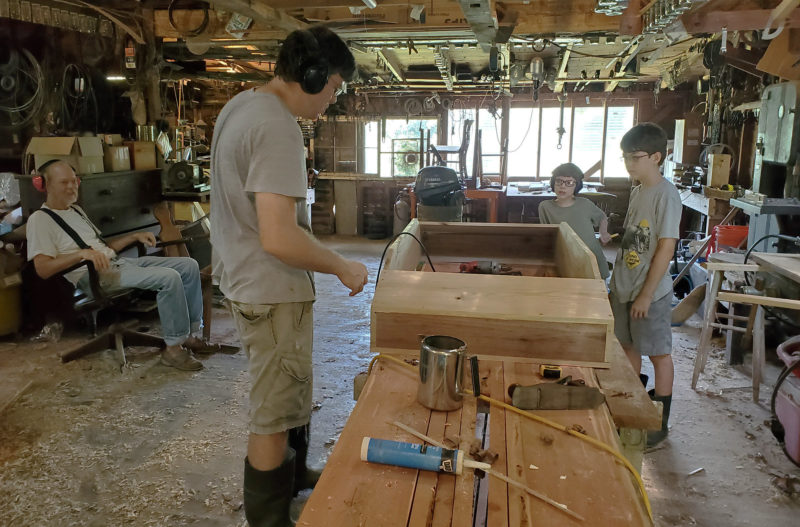 Photos courtesy of the Blake family
Photos courtesy of the Blake familyDaniel, Nick, Andrew, and Patrick (left to right) gather in the shop where a scow is taking shape. Patrick chose the design for his boat from a book written by Boy Scout founder Daniel Carter Beard Carter in 1882, nearly a half century after the Blakes took to boats and boatbuilding.
Patrick’s grandfather, Daniel Blake, built about two dozen boats, including BOGLE, a 34′ Galway Hooker, JUBILEE, a 50′ steel paddle-wheeler, and MARY SAVAGE, a 31′ boat reminiscent of a 16th-century caravel. Patrick’s father, Nick, has also been drawn to building small wooden boats, among them CURLEW, a stretched New York Whitehall, and a faering with a flat, beachable bottom. Nick and Daniel both started early and small. Nick built a 7′ scow, HAPPY COCKROACH, when he was nine years old. Daniel was about eight when he built a similarly square-ended boat, but much narrower, like an old wooden horse-watering trough.
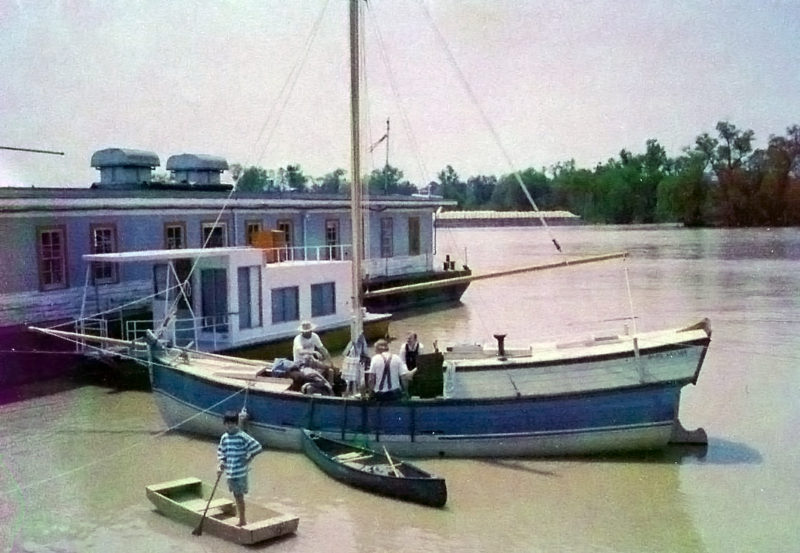
Patrick’s father, Nick, was 10 years old when he stood proudly in the 7′ scow he built and named HAPPY COCKROACH. He used it to ferry people to and from MARY SAVAGE, the caravel shown here that Patrick’s grandfather Daniel built and launched in 1990.
Patrick and his younger brother Andrew have spent a lot of time watching their father build boats in the family shop under their grandfather’s watchful eye. It was only natural for Patrick to get in on the action. We’ll let him tell his story.
I wanted to build a boat, because I heard about my father’s HAPPY COCKROACH, the boat he built when he was young. My grandfather was an avid boatbuilder, and my father built boats, too. I wanted a boat of my own to paddle around the waterfall pool on our land. I had been hoping to build a boat for a long time, and then we finally decided to make one.
I started looking through books on how to build a simple boat, and finally I found the plans for a small scow in The American Boy’s Handy Book by Daniel Carter Beard. I started thinking about what size I would like it, and what I could build quickly and use right away. I decided on a length of 5′ 6″ and a beam of 29-3/4″, because that’s what size boards we had in the shed.
The Blakes have a sawmill on their land and, as trees in their woods die or fall prey to disease, they’re felled, sawn, and stacked. As a good supply of air-dried lumber is always at hand, Nick notes, “Free time is all it takes for a Blake to start building a boat.”
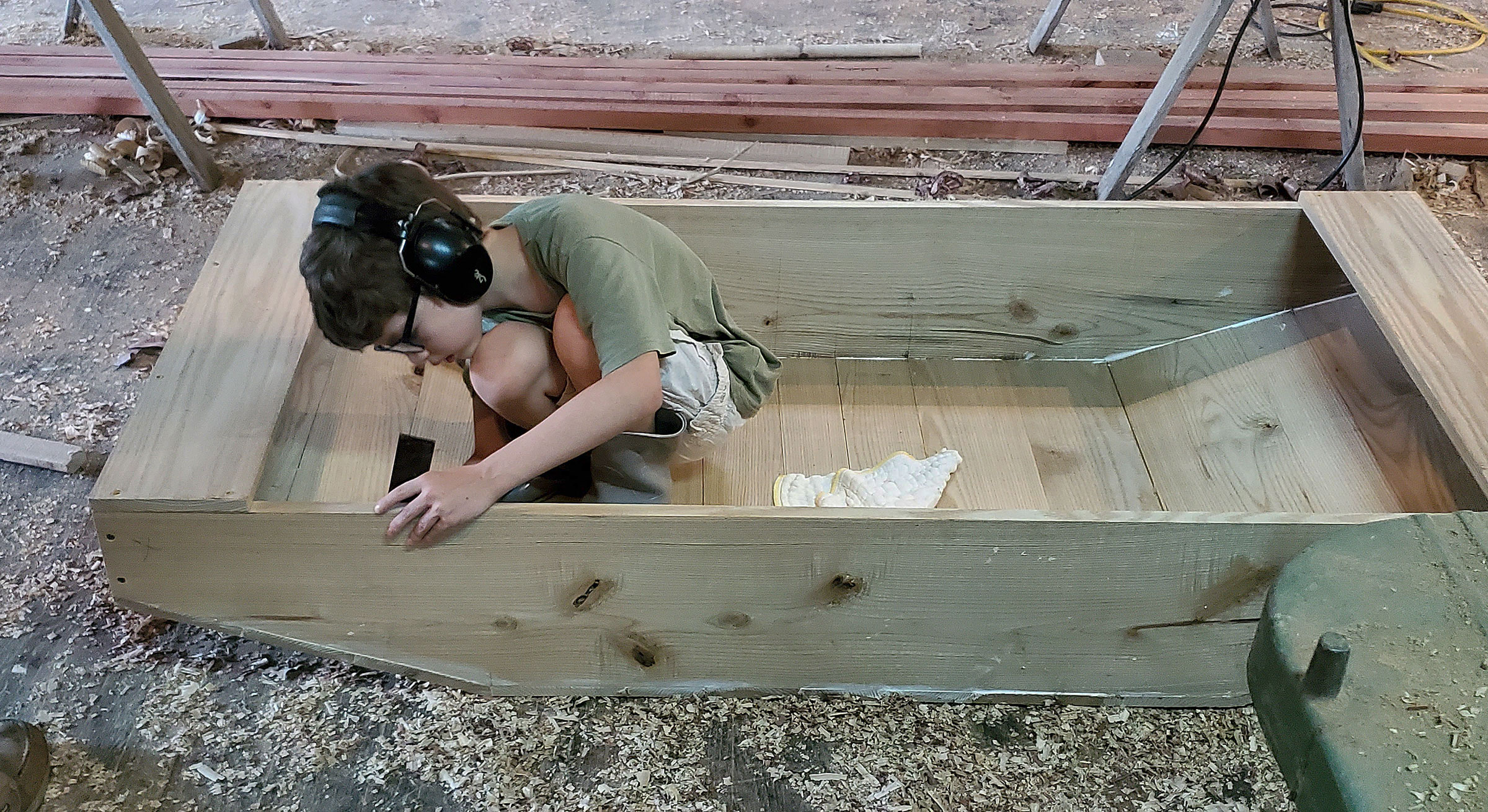
Andrew lends a hand on Patrick’s boat. It’s likely he is already thinking about a boat he’d like to build for himself.
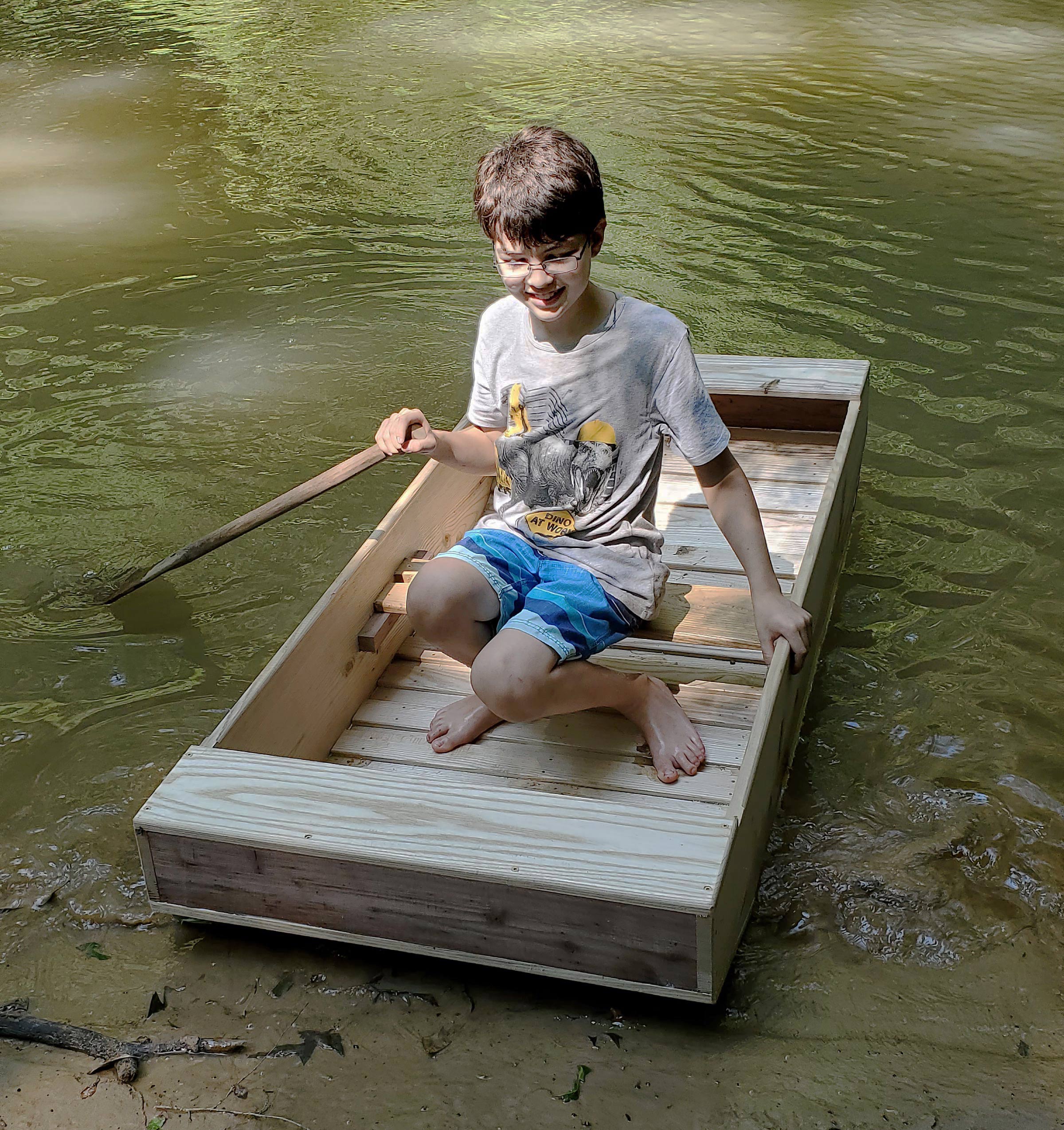
Afloat for the first time in the boat he built, Patrick is evidently and rightly pleased with his work.
My father wanted to make some sort of a punt thing that didn’t look too good (and looked like some sort of a papaya), while my grandfather and I wanted to build a scow. After a lot of arguing, Dad finally gave in.
We started with the sides. We made them out of a 10′ 6″ piece of 1″-thick, home-cut sassafras. We drew the diagram of the sides on the piece of wood, and cut them out with a Skilsaw and tablesaw. We planed them to 7/8″, and fastened them together with 3″ deck screws to two pieces of 28″ walnut on the ends. Then we put two sassafras boards on the ends above the walnut for extra strength.
Next day, we started on the bottom. We planned to make it batten-seamed. We made the bottom out of 5/8″ sassafras boards, 29-3/4″ long. We clamped each bottom board on, drew the length, cut it off, clamped it back on, drilled, took it back off again, caulked the edge of the side where the board should go, put the board back on once more, and fastened it down with deck screws.
Then we made the battens. For each batten, we took a piece of 3/8″ x 2″ sassafras, and cut it to length. Then we planed the edges, fit the battens in the boat, took them out, and put a bead of silicone down the seam where the bottom boards met. Then we put the battens in their correct places, and fastened them down with tiny brass and copper nails. Then we put a seat in, and the boat was ready to go.
We took her down to Bliss Creek and put her in the water. She floated well, and didn’t leak too much. I paddled her around the pool with an old oar that had been shortened. Then my dad paddled her across the pool, and my brother and I both got in and paddled around. Then we put her up on blocks on a hill by the creek. A couple weeks later some friends came over. My friend Will and I got into the boat and paddled around, but then Will’s little sister and my brother tried to get into the boat, too, and swamped it, so we had to drag it up on the shore and dump the water out.
After the first creek trials, the boat went back to the shop for paint and oarlocks. Boatbuilding often goes beyond woodworking to metalworking. Patrick was introduced to arc welding so he could build a trailer for the scow. Daniel built an electric car for Patrick and Andrew a few years ago. He had built a similar gas-engine car for Nick when he was in his teens.
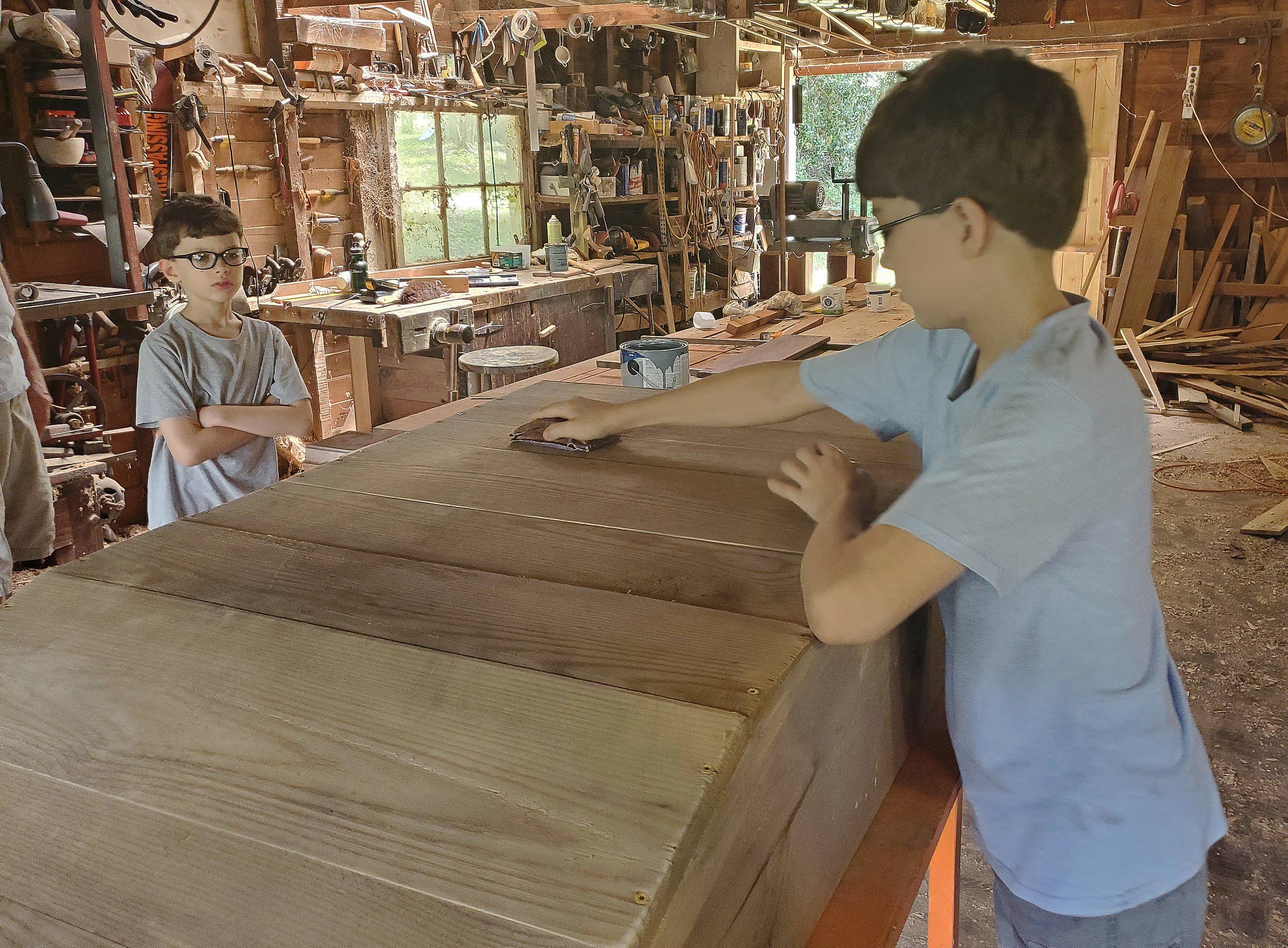
After the sea trials with the unpainted boat, it was left outside to dry then brought back to the shop for finishing. Here, Patrick sands the wood smooth as Andrew look on at what is generally regarded as the least interesting part of boatbuilding.
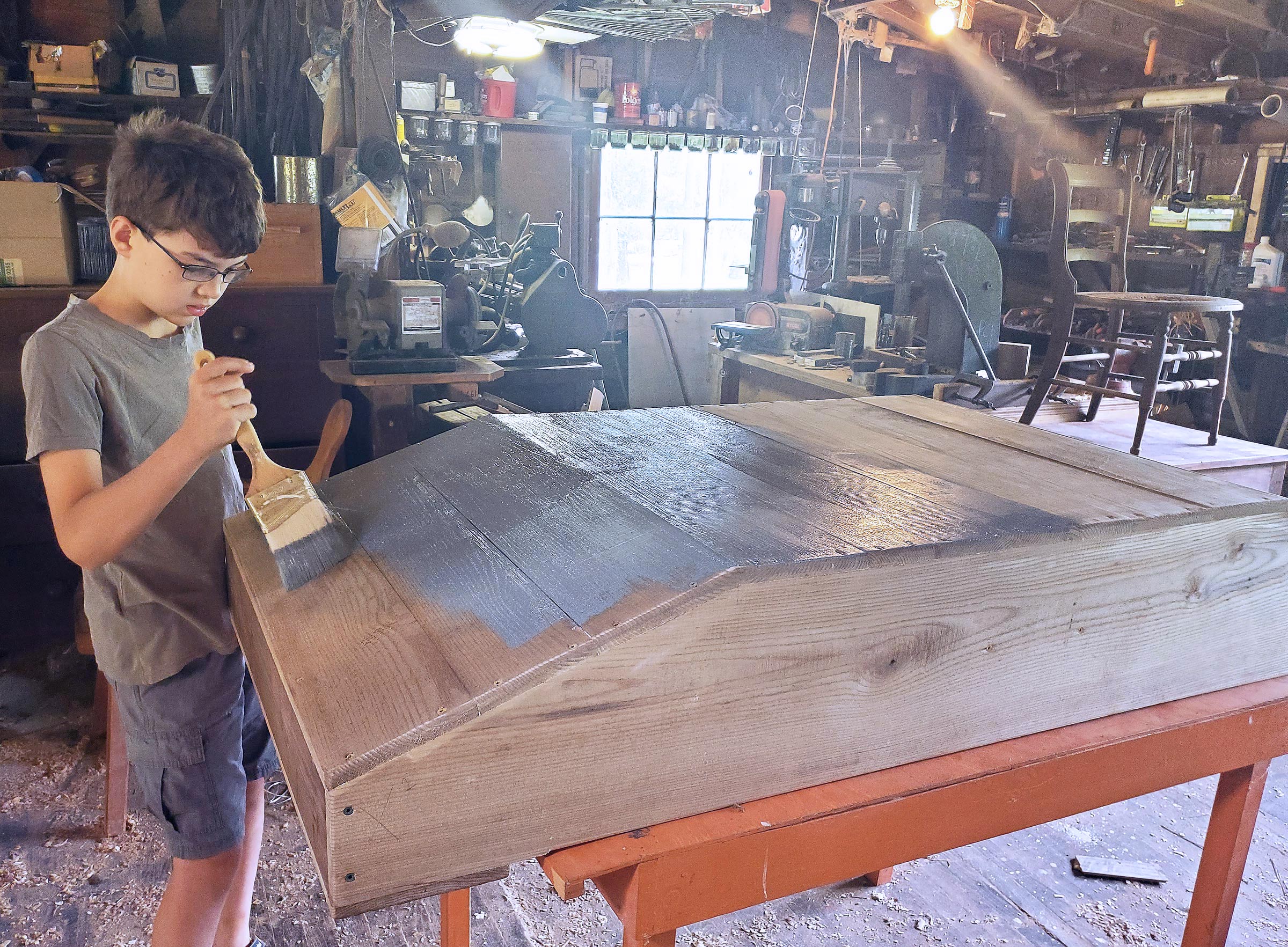
A natural at painting, Patrick doesn’t have a spot of paint on him and the brush has been carefully dipped in the can stopping well shy of its ferrule.
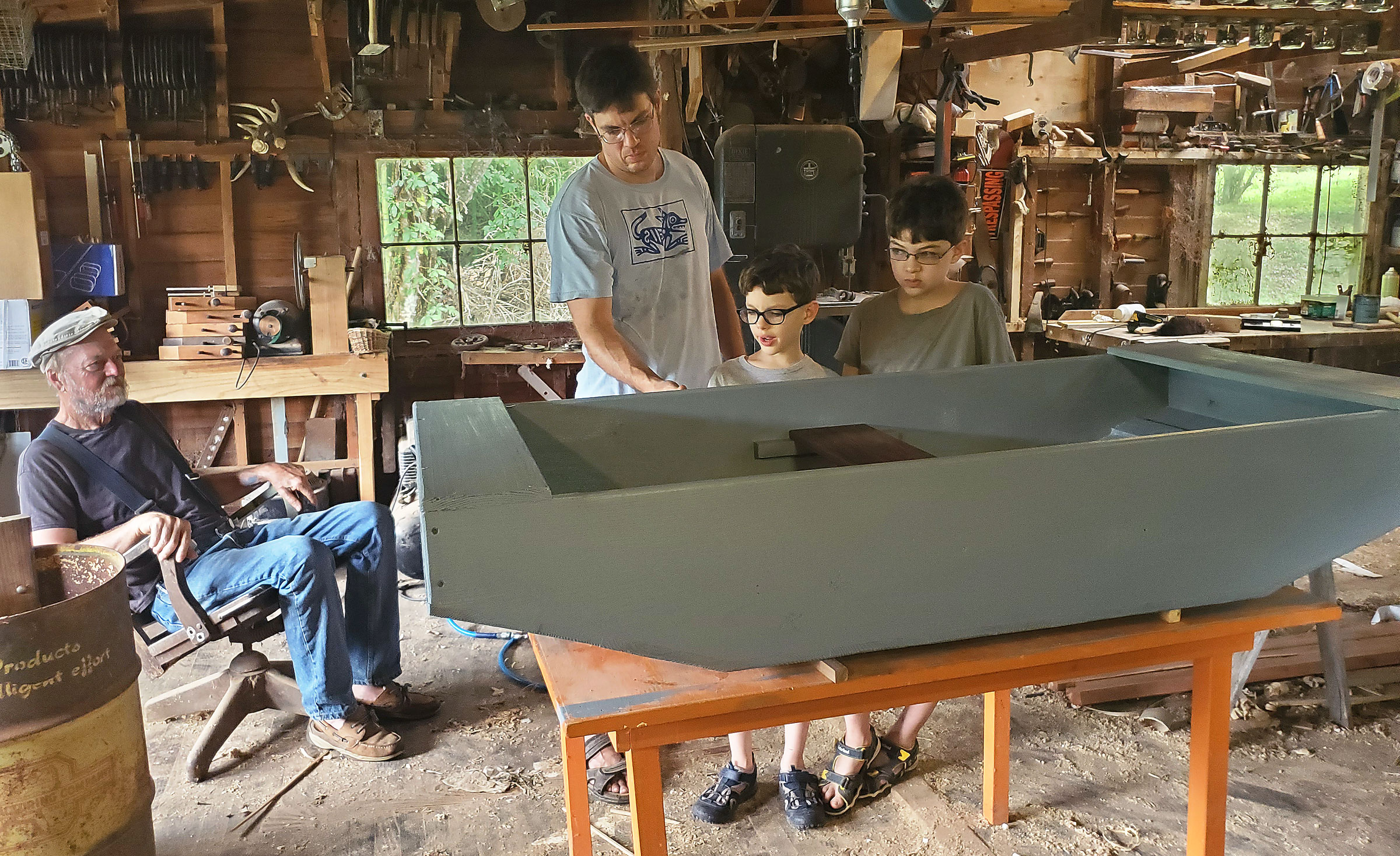
The love of boats and the skills to build them has been passed down from Daniel to his son and grandsons, and the newly finished scow is the latest boat to take shape in his shop.
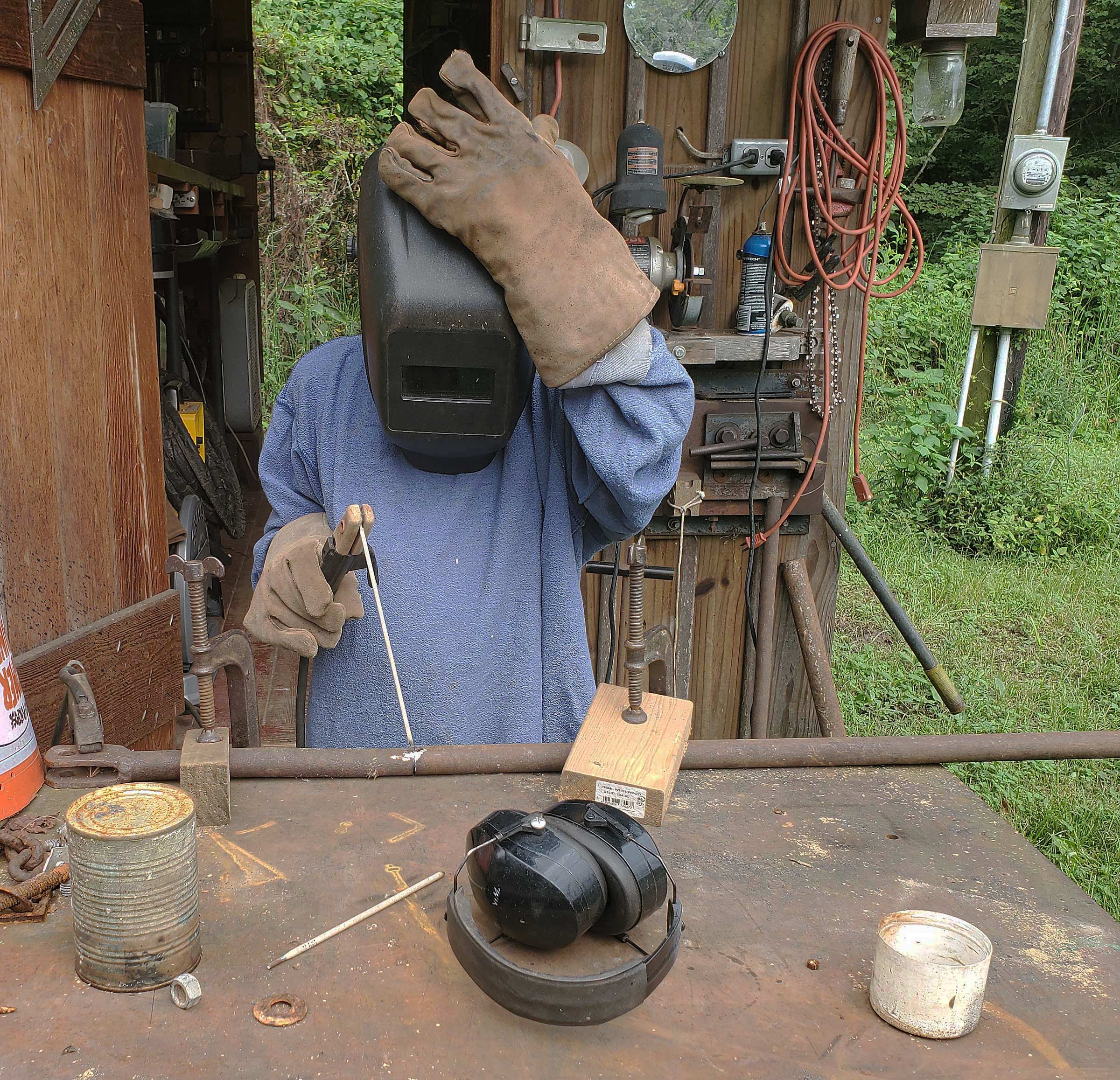
Arc welding takes a steady hand that comes only with practice. Patrick is getting an early start.
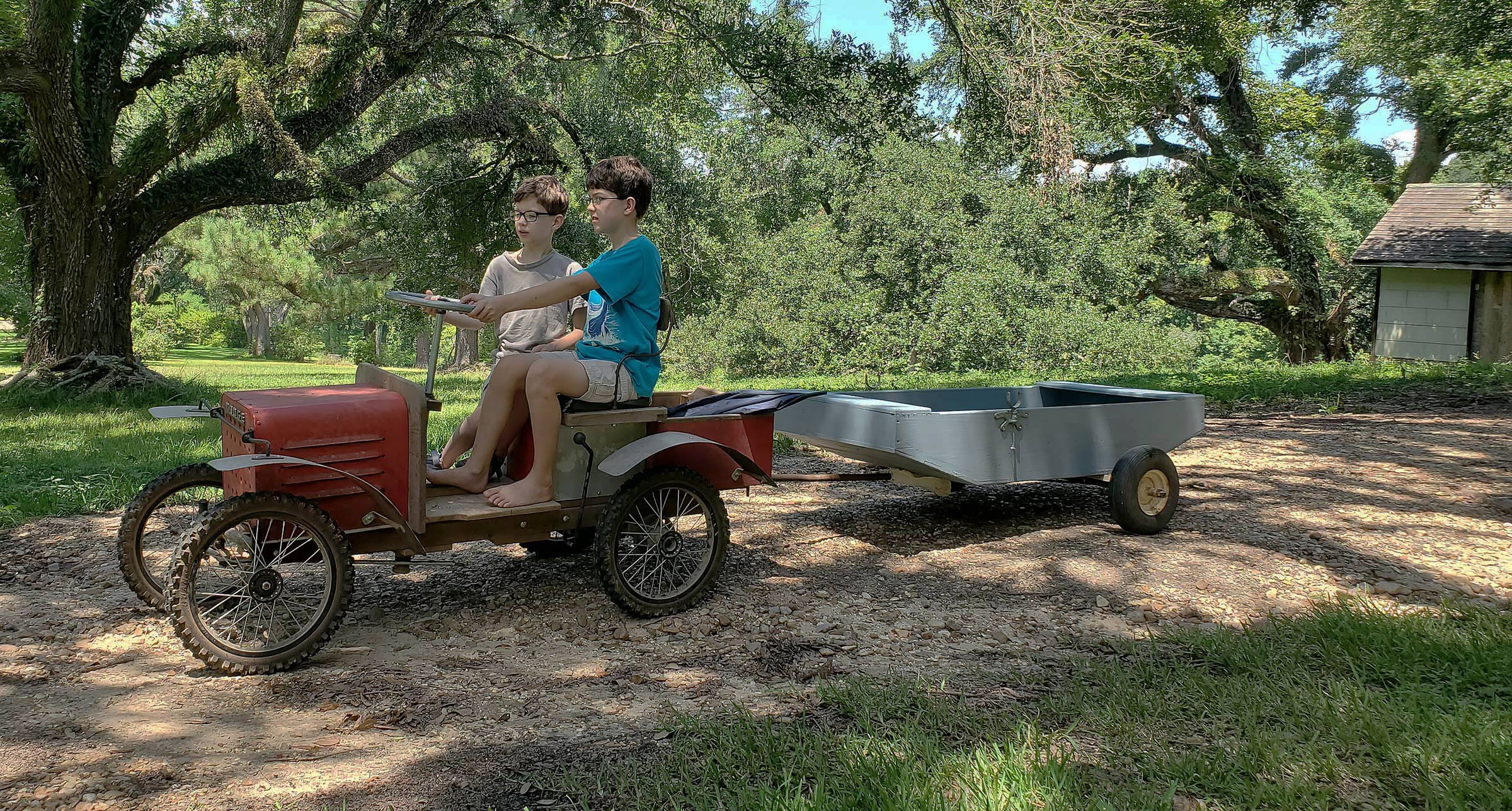
Andrew (left) and Patrick head off for a day on the water with the boat in tow on the trailer Patrick built. Their electric car was built by their grandfather, Daniel. When their father, Nick, was 15 years old, Daniel built a similar gas-powered car for him.
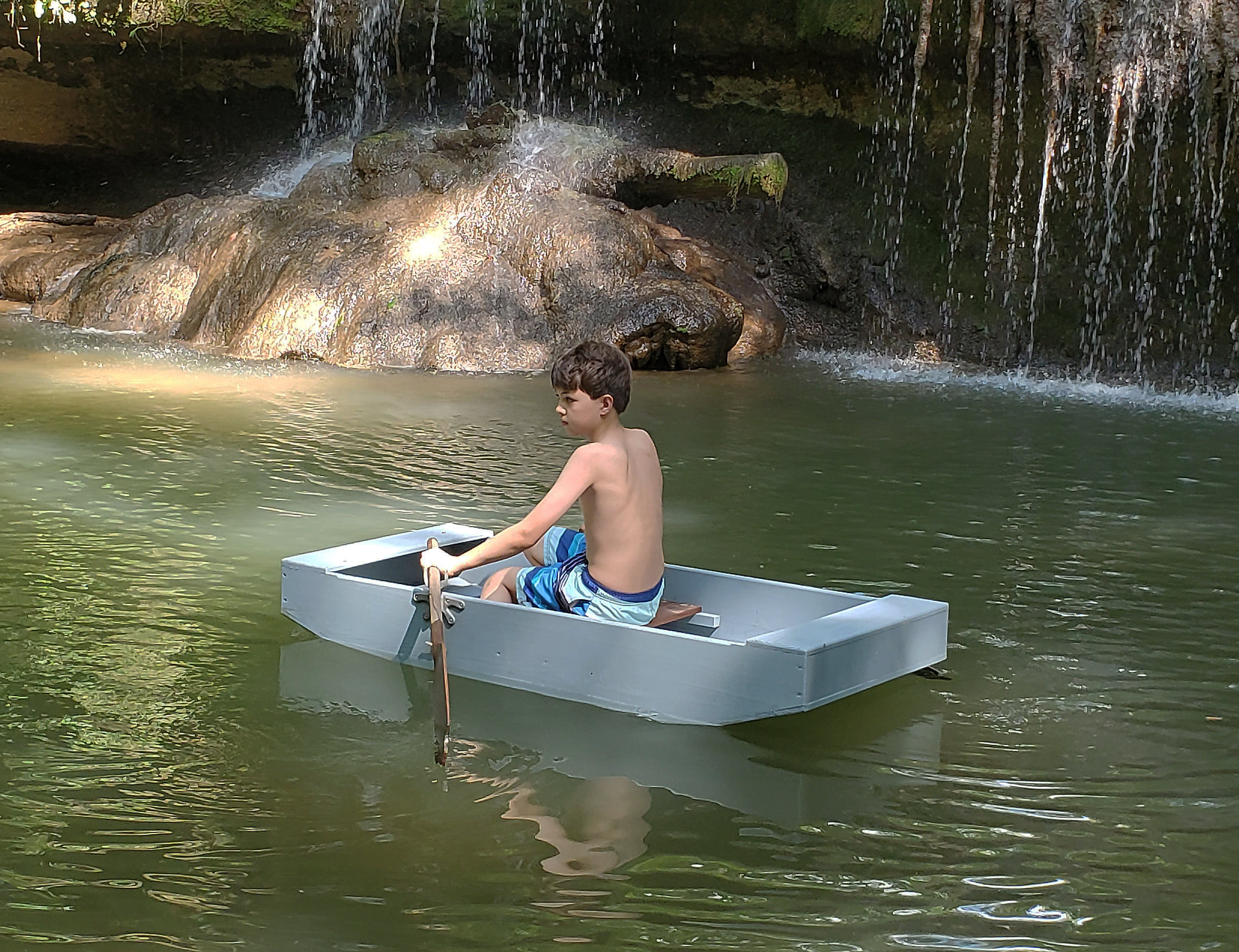
Master of the boat he built, Patrick has his ticket to a bit of Mississippi paradise, the aptly named Bliss Creek. This waist-deep pool at the base of the waterfall is a Blake family swimming hole.
I am very glad to have a boat to row about the waterfall pool, but it gives me a feeling that my paddles are too short. I need to make oars. I am not planning to build another boat soon, but I do want to fix up my great-uncle’s wooden houseboat, TELEPHONE. It is currently sitting on blocks on the old pigsty slab.
It’s in the Blake blood to build one boat after another, so we likely will hear from Patrick again. His brother Andrew may soon follow suit, and the two of them will keep the shop busy until it’s time to hand it over to the seventh generation of Blake boatbuilders.![]()
Do you have a boat with an interesting story? Please email us. We’d like to hear about it and share it with other Small Boats Magazine readers.
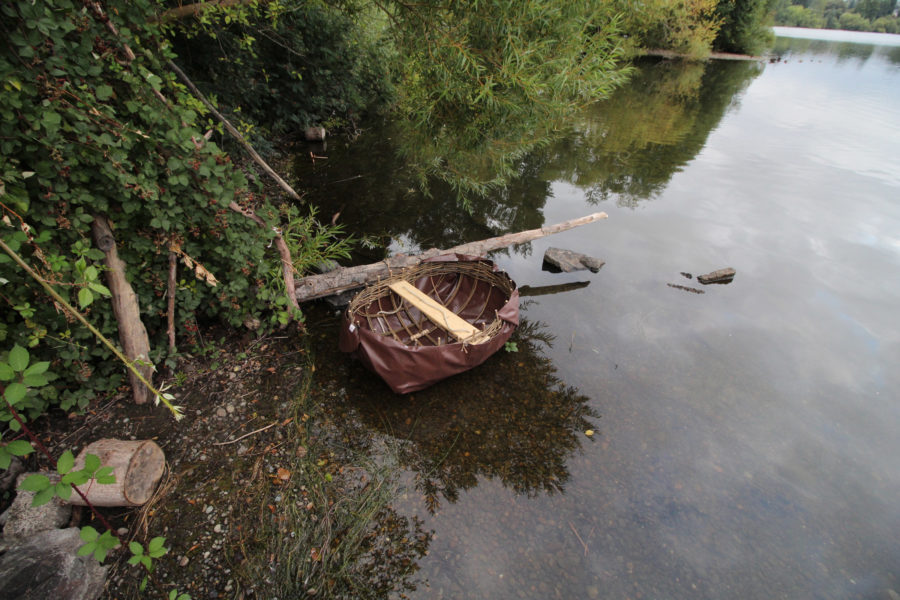
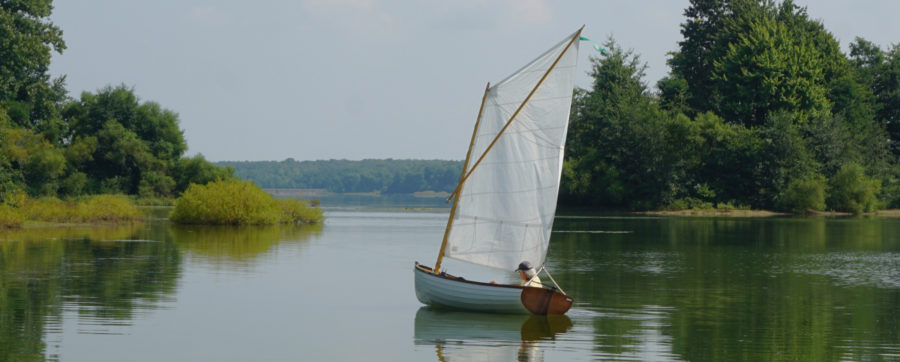
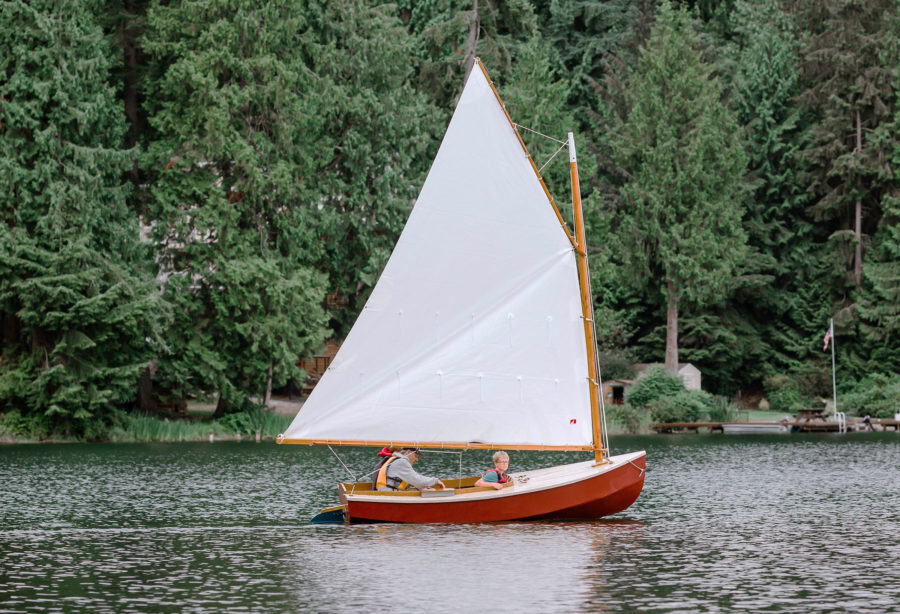
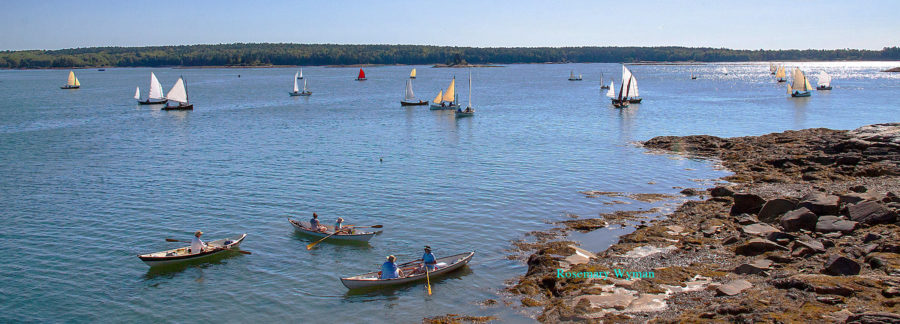
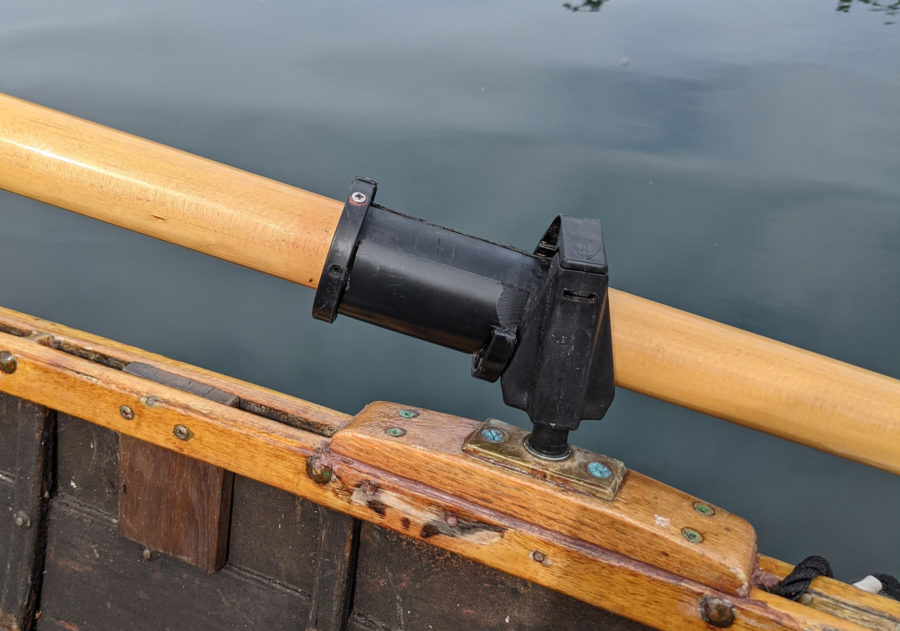
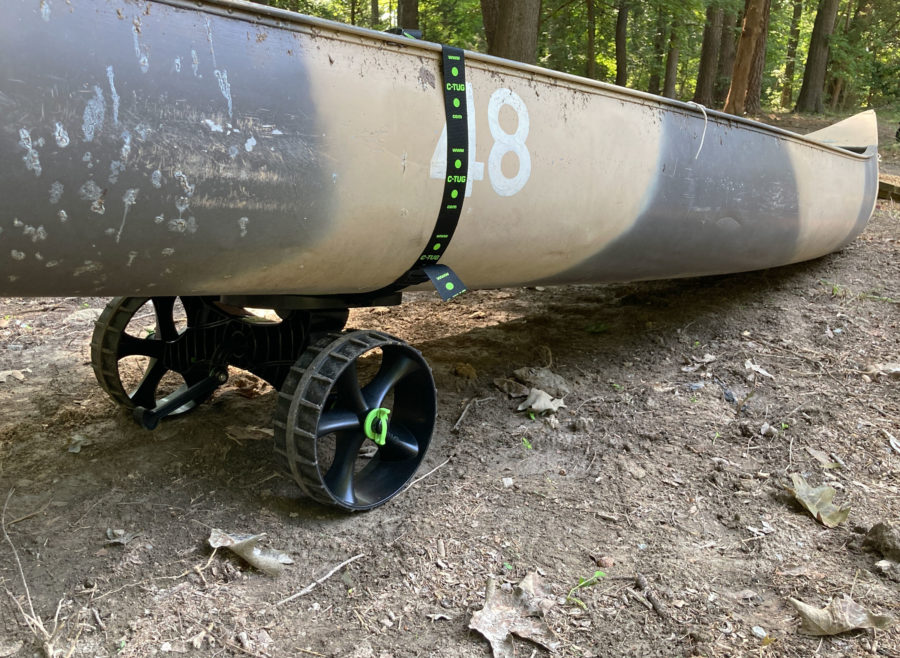
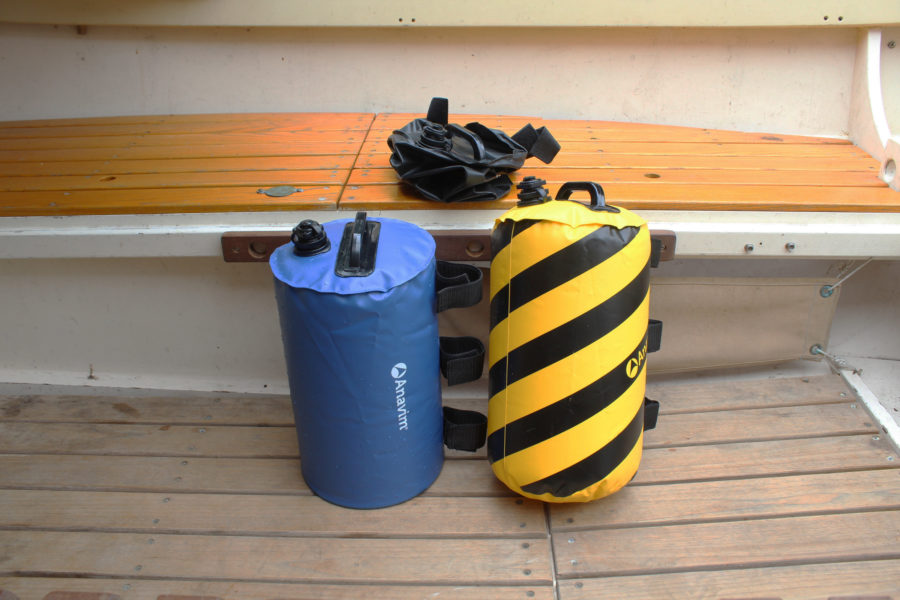
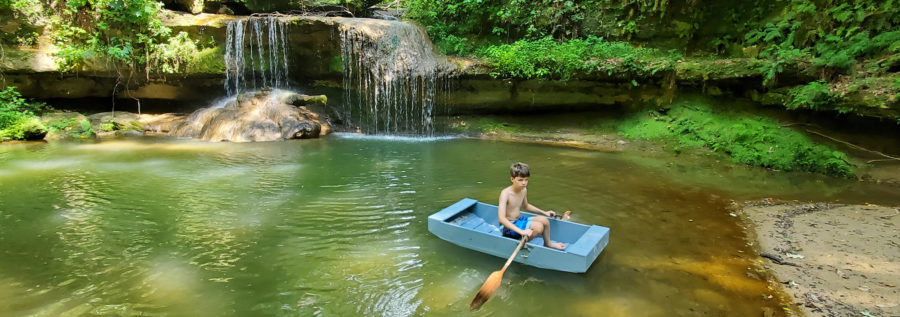
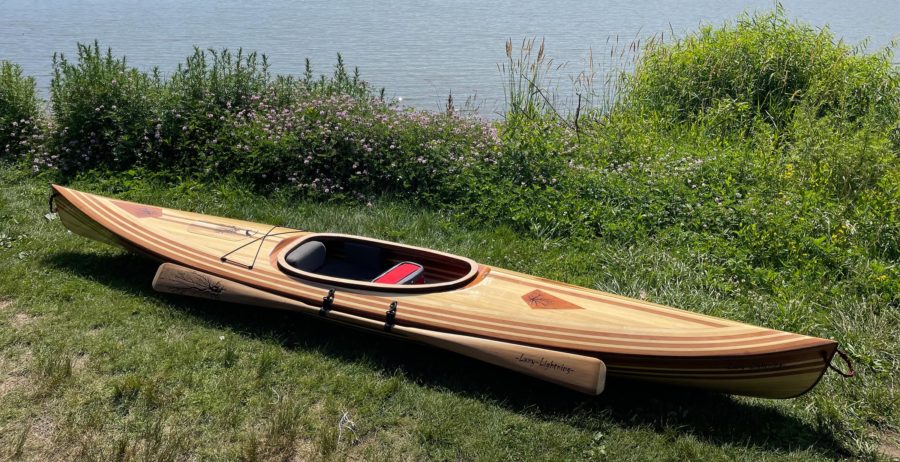
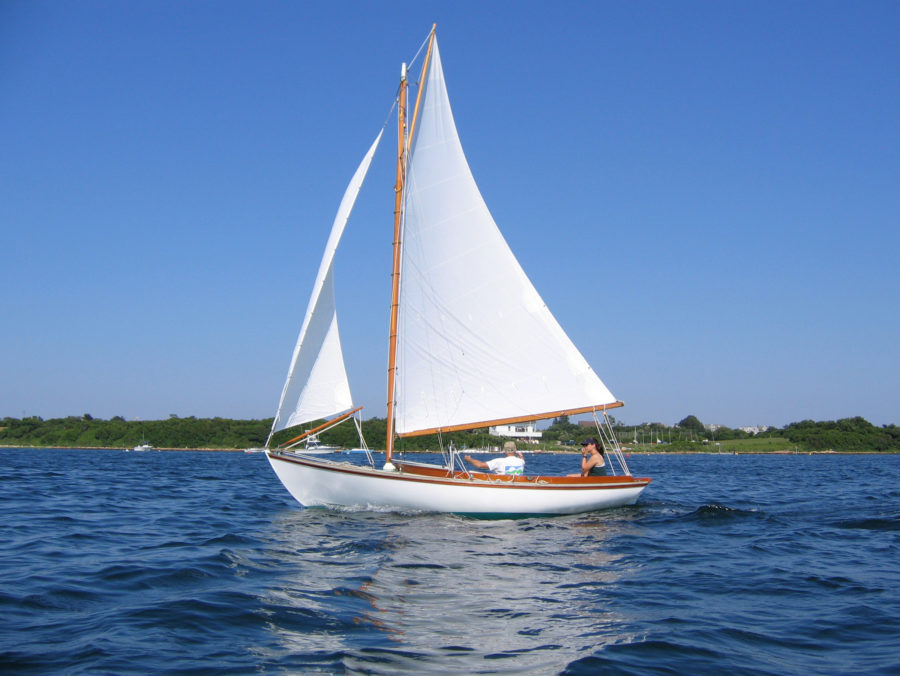
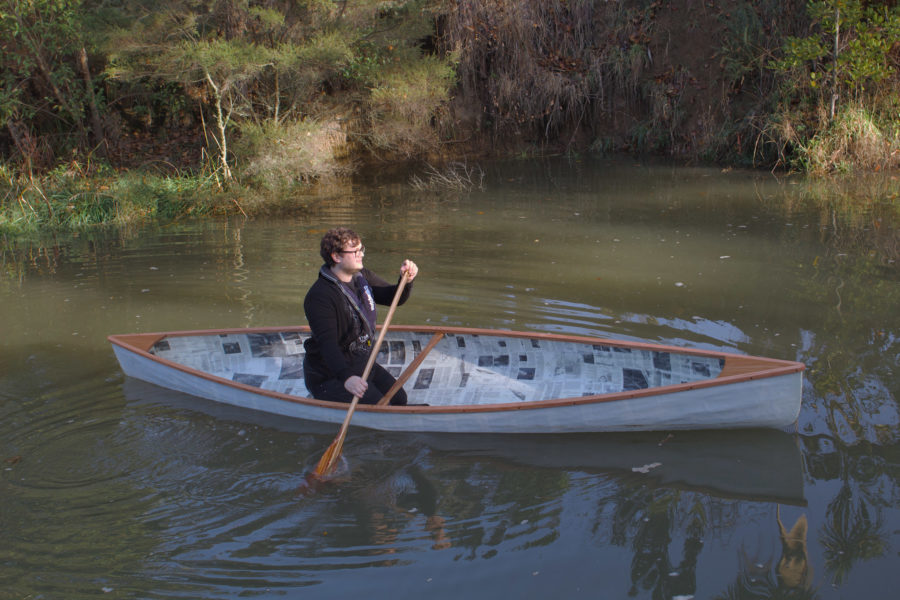

What a great project and family time.
This boat reminds me of my first boat. I found it in a large mud puddle and dragged it home. Made of 2x10s with a flat bottom, about 4′ long.
Love the simplicity of this. Two things: First is I would have hunted for a clear boards for the sides. Seems like knot-holed ones punch through sometimes. The second is, do a story on the car next. Too cool for just a passing mention
Talk about memories!
My dad and I built a boat very similar to this when I was a young Boy Scout in Wilmington, NC. I’m 71 now. As I remember the plans were in Boys Life magazine and it took a 4×8 sheet of ply, two 1x10s for the sides and two 2x6s for the bow and stern. Galvanized roofing nails held it together. I used to duck hunt in it. I sunk it on its inaugural voyage trying to use a 5-hp motor on it. Turns out the rounded stern provided no support for the motor. I’d build another one right now if my grandson was older than 3.
Thanks for the article,
Bob Hatcher